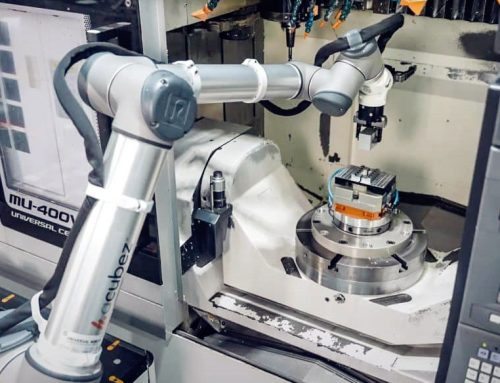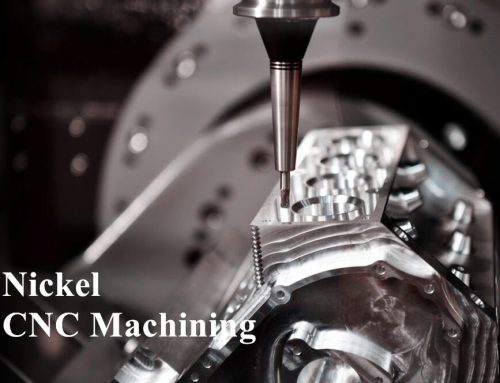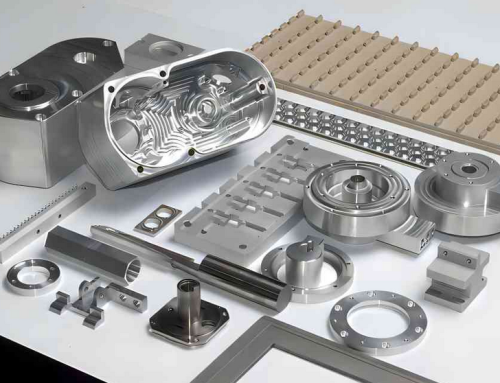Because of its special characteristics, machining stainless steel is difficult. High-quality results are possible with the right information and strategy. Everything from knowing stainless steel characteristics to the best machining methods is covered in this tutorial.
Which is stainless steel?
A category of iron-based alloys called stainless steel is corrosion-resistant, strong, and attractive. Chromium oxide produces a thin passive coating on the surface, inhibiting further oxidation and providing corrosion resistance. In addition to 10.5% chromium, stainless steel often includes nickel, molybdenum, and nitrogen to improve characteristics. These enhancements enhance stainless steel’s versatility in automotive and medical device applications.
Different Stainless Steels
Variations in stainless steel microstructure affect its qualities and appropriateness for diverse applications.
- Austenitic Stainless Steel, which makes up around 70% of all stainless steel production, is the most prevalent. High chromium and nickel concentrations make it corrosion-resistant and formable. 304 and 316 are popular in corrosion-resistant situations.
- Ferritic Stainless Steel is resilient to stress corrosion, cracking and oxidation due to its high chromium and low carbon content. Automotive exhaust systems employ magnetic stainless steel.
- Martensitic Stainless Steel is heat-treated for excellent strength and toughness. These high-carbon steels are utilized in cutlery and surgery.
- Duplex Stainless Steel combines austenitic and ferritic stainless steel characteristics, providing increased strength and improved stress corrosion resistance. Chemical processors employ this type to withstand pitting and crevice corrosion.
Precipitation Hardening Stainless Steel can be heat-treated for increased strength and hardness. Aerospace, high-performance, and mechanically critical applications require alloys like 17-4 PH.
Stainless qualities
Effective machining requires knowledge of stainless steel characteristics. The oxide layer formed by chromium resists rust, making it corrosion-resistant. Especially when heat-treated, stainless steel is robust, making it suited for demanding applications. Its thermal conductivity is lower than carbon steel, which can cause heat buildup during machining, compromising tool life and workpiece quality. Stainless steel work hardens quickly, making it tougher to process. Due to its ductility and durability, stainless steel may be bent and machined without breaking.
Machining stainless steel challenges
Due to various inherent material characteristics, machining stainless steel is difficult. As the material is distorted during cutting, work hardening increases tool wear and complicates subsequent machining. Machined stainless steel builds up heat due to its poor thermal conductivity. Without adequate management, this can reduce tool life and surface polish. Higher cutting forces and chip formation and evacuation due to the material’s toughness and ductility increase tool wear. Cutting tools made of stainless steel tend to build up material, which degrades the machined part’s surface polish and precision.
Stainless Steel Machining Techniques
Choosing Tools
The correct tools are essential for machining stainless steel. Carbide tools are favoured due to their wear durability and high-temperature resistance over HSS and ceramic tools. Cutting precision and surface finish are improved by carbide tools’ prolonged sharpness. Cutting tools can also benefit from coatings. Coatings like TiN, TiAlN, and AlTiN minimize friction and enhance tool life by blocking heat and wear. For high-speed machining or work hardening, these coatings are ideal.
Trimming
Success in stainless steel machining requires cutting parameter optimization. Balance cutting speed, feed rate, and depth of cut to reduce heat, tool wear, and work hardening. Cutting speeds of 30 to 60 meters per minute, depending on alloy and tool type, are advised to avoid heat buildup and prolong tool life. Use a reasonable feed rate to prevent work hardening and sustain productivity. This balances material removal rate and surface quality. Smaller depths of cut reduce tool engagement, reducing heat generation and work hardening, especially during finishing.
Methods of Machining
Certain stainless steel machining techniques require special considerations to enhance efficiency and quality. Use sharp, positive-rake tools and enough coolant to reduce work hardening and heat when turning. By minimizing deflection and tool wear, climb milling reduces work hardening and improves surface quality. Short, stiff drills with high helix angle vent chips and decreased heat. Also, peck drilling, which removes the drill bit to clear chips, might reduce heat. Fine finishes are achieved by grinding with silicon carbide or aluminium oxide abrasives to reduce heat. Use carbide inserts that can tolerate stainless steel for precision and durability in threading.
Lubrication/Coolant
In stainless steel machining, cooling and lubrication minimize heat and friction, improving tool life and surface smoothness. To prevent workpiece distortion and tool wear, water-based coolants with extreme pressure additives disperse heat and lubricate the cutting zone. Maintaining proper cutting temperatures with these coolants ensures consistent machining. Taping and threading require high lubricity; thus, cutting oils or pastes can reduce friction and improve surface quality. Regular coolant monitoring and replacement are essential for efficiency and safety.
Tips for Machining SS
Successful machining of stainless steel involves various parameters. First, tools with sharp edges and good rake angles reduce work hardening and cutting forces, improving tool life and surface smoothness. Managing lengthy, stringy stainless steel chips requires excellent chip control. Chip crushers can lower tool damage and enhance safety by breaking chips into manageable bits. Machine stiffness prevents vibrations that damage surface polish and tool life. Maintenance of machining quality requires tool monitoring and replacement. Promptly replacing worn tools maintains performance and part consistency. Last but not least, stainless steel machining is more predictable and efficient when cutting settings and tool shapes are adjusted as necessary to obtain the desired surface finish.
Safeguards
To protect workers and ensure a safe working environment, machining stainless steel requires various safety measures. Protecting against chipping, sharp edges, and noise requires safety glasses, gloves, and hearing protection. Machine users should follow manufacturer instructions for operation and maintenance to avoid accidents and prolong equipment life. Guards and conveyors assist in containing chips and avoid injuries. Finally, prevent spills and skin contact when handling coolant to prevent irritation and other health risks. Proper coolant storage, use, and disposal assure worker safety.
Stainless Steel Machined Parts Common Uses
Its special qualities make stainless steel appropriate for many industrial applications. The aerospace industry uses stainless steel components for strength, corrosion resistance, and heat resistance. Aviation frames and engine parts benefit from the material’s durability and reliability. Because of its strength and corrosion resistance, stainless steel is employed in vehicle exhaust systems, fuel injectors, and structural components. Surgical instruments, implants, and diagnostic equipment are made of stainless steel due to its biocompatibility and corrosion resistance. Processors and conveyors in the food and beverage industries are made of stainless steel. Finally, in hostile oil and gas settings, stainless steel parts withstand corrosion and extreme temperatures.
Machining Advancements
Many innovative methods can improve stainless steel part machining. Liquid nitrogen cools the cutting zone, reducing tool wear and work hardening. When used in high-speed applications, this method enhances surface finish and tool life. In order to boost productivity while retaining accuracy, High-Speed Machining (HSM) uses greater spindle speeds and feed rates. High-speed machining requires specialized cutting tools and stiff machine tools. Ultrasonic machining reduces cutting forces and helps tools last longer by vibrating at high frequencies. Superior surface quality is achieved using this method for complicated forms and hard-to-machine metals. Electrical Discharge Machining (EDM) employs electrical sparks to degrade material. Precision and precise detailed applications typically use EDM.
QC/Inspection
Making sure machined stainless steel parts match industry standards and client needs is vital. For consistent results, quality control must be robust. Micrometres, callipers, and coordinate measuring machines (CMM) are needed for dimension verification and specification compliance. For a smooth finish and customer satisfaction, profilometers should assess surface roughness. Material testing, including hardness, tensile, and corrosion resistance tests, is essential to evaluate qualities and assure application applicability. NDT methods, including ultrasonic, radiography, and dye penetrant testing, may find problems without destroying parts, ensuring product integrity and reliability.
Conclusion
Machining stainless steel demands knowledge of its properties and problems. Manufacturers may make high-quality parts for many sectors by choosing the correct equipment, optimizing cutting settings, and using modern machining techniques. During machining, safety and quality control ensure that stainless steel components work reliably. CNC Machining stainless steel may be satisfying and successful with the appropriate approach.




